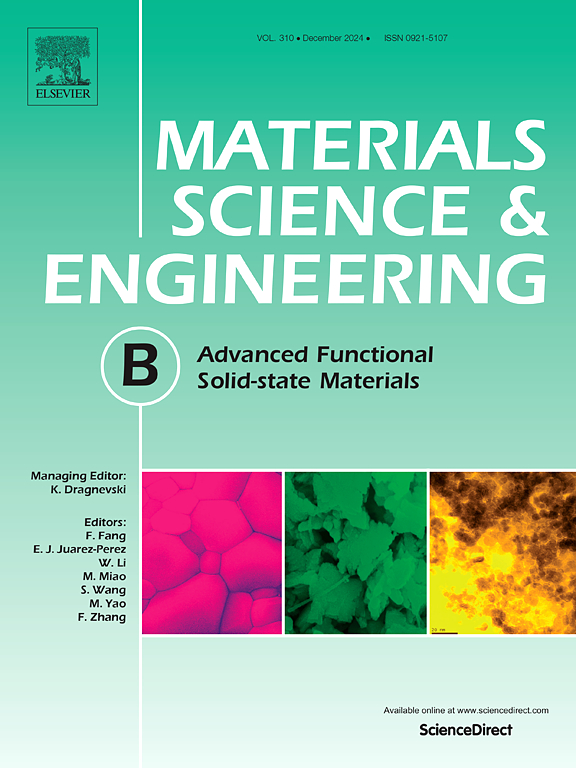Development of m-zirconium/halloysite nanoclay composite modified glassy carbon electrode for electrochemical detection of metaxalone in biological and environmental samples
IF 3.9
3区 材料科学
Q2 MATERIALS SCIENCE, MULTIDISCIPLINARY
引用次数: 0
Abstract
The determination of Metaxalone (MXL), a widely used muscle relaxant, is crucial due to its potential harmful effects, including dizziness, nausea, liver toxicity, and serotonin syndrome, especially at trace levels in pharmaceutical formulations and biological samples. A sensitive voltammetric sensor was developed for trace-level detection of Metaxalone (MXL) using a zirconium-halloysite nano clay composite (m-Zr/HNC) modified glassy carbon electrode (m-Zr/HNC@GCE). Synthesised material was Characterized by XRD, SEM, FTIR, and electrochemical impedance spectroscopy (EIS), the sensor demonstrated enhanced catalytic activity. Optimal performance was achieved in phosphate buffer (pH 6.0). Cyclic voltammetry (CV) and square wave voltammetry (SWV) were used to study MXL’s electrochemical behaviour. The limit of detection (LOD) and limit of quantification (LOQ) were 4.86 nM and 16.21 nM, respectively. The sensor was successfully applied to pharmaceutical, biological, and environmental samples, ensuring safety and regulatory compliance.
间锆/高岭土纳米粘土复合修饰玻碳电极电化学检测生物及环境样品中甲霉素的研制
Metaxalone (MXL)是一种广泛使用的肌肉松弛剂,由于其潜在的有害影响,包括头晕、恶心、肝毒性和血清素综合征,特别是在药物制剂和生物样品中的微量水平,其测定至关重要。采用锆-高岭土纳米粘土复合材料(m-Zr/HNC)修饰玻碳电极(m-Zr/HNC@GCE),研制了一种用于痕量检测甲氧他酮(MXL)的灵敏伏安传感器。通过XRD, SEM, FTIR和电化学阻抗谱(EIS)对合成材料进行了表征,表明该传感器具有较强的催化活性。在pH 6.0的磷酸盐缓冲液中效果最佳。采用循环伏安法(CV)和方波伏安法(SWV)研究了MXL的电化学行为。检测限(LOD)为4.86 nM,定量限(LOQ)为16.21 nM。该传感器已成功应用于制药、生物和环境样品,确保了安全性和法规遵从性。
本文章由计算机程序翻译,如有差异,请以英文原文为准。
求助全文
约1分钟内获得全文
求助全文
来源期刊

Materials Science and Engineering: B
工程技术-材料科学:综合
CiteScore
5.60
自引率
2.80%
发文量
481
审稿时长
3.5 months
期刊介绍:
The journal provides an international medium for the publication of theoretical and experimental studies and reviews related to the electronic, electrochemical, ionic, magnetic, optical, and biosensing properties of solid state materials in bulk, thin film and particulate forms. Papers dealing with synthesis, processing, characterization, structure, physical properties and computational aspects of nano-crystalline, crystalline, amorphous and glassy forms of ceramics, semiconductors, layered insertion compounds, low-dimensional compounds and systems, fast-ion conductors, polymers and dielectrics are viewed as suitable for publication. Articles focused on nano-structured aspects of these advanced solid-state materials will also be considered suitable.
 求助内容:
求助内容: 应助结果提醒方式:
应助结果提醒方式:


